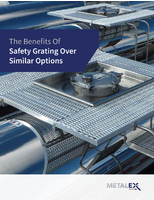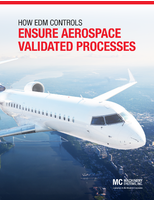ASTM sets standard for nuclear remote viewing systems.
Press Release Summary:
With C 1661, Guide for Viewing Systems for Remotely Operated Facilities, ASTM established minimum requirements for viewing systems for remotely operated facilities, including hot cells used for processing and handling of nuclear and radioactive materials. Some equipment covered by C 1661 includes radiation-hardened and nonradiation-hardened cameras, lenses, camera housings and positioners, periscopes, through-wall/roof viewing, and remotely deployable cameras.
Original Press Release:
ASTM Nuclear Fuel Cycle Committee Develops Remotely Operated Viewing Systems Guide
Begins Development of Proposed Standard for Quality of Nuclear Fuel Pellets
ASTM International Committee C26 on Nuclear Fuel Cycle has recently published a new standard and has begun the development of a proposed new standard. Subcommittee C26.14 on Remote Systems is responsible for the newly approved standard, C 1661, Guide for Viewing Systems for Remotely Operated Facilities, while Subcommittee C26.02 on Fuel and Fertile Material Specifications is currently at work on the development of WK14330, Nuclear Fuel Pellet Physical Integrity Limits: Chips, Cracks, Defects.
Committee C26 meets June 26-29 at the June Committee Week in Norfolk, Va. For membership or meeting information, contact Jeffrey Adkins, manager, Technical Committee Operations, ASTM International (phone: 610/832-9738; jadkins@astm.org).
C 1661, Guide for Viewing Systems for Remotely Operated Facilities
A new ASTM International standard establishes minimum requirements for viewing systems for remotely operated facilities, including hot cells, used for the processing and handling of nuclear and radioactive materials. The standard, C 1661, Guide for Viewing Systems for Remotely Operated Facilities, was developed by Subcommittee C26.14 on Remote Systems, which is part of ASTM International Committee C26 on Nuclear Fuel Cycle.
"This standard has brought together a wide range of experts in the development of remote viewing technologies and experts in the field deployment and application of this equipment," says Frank Heckendorn, C26 member and an advisory engineer at the Savannah River National Laboratory in Aiken, S.C.
According to Heckendorn, C 1661 can be used for both nuclear and non-nuclear applications where remote viewing is required for operation. While much of the standard applies to nuclear environments in which the survival of equipment exposed to radiation is an issue, the standard also applies in any environment in which direct access is limited due to a variety of factors.
C 1661 covers all types of remote viewing technology, other than shield windows, which are covered in another C26.14 standard, C1572-04 Standard Guide for Dry Lead Glass and Oil-Filled Lead Glass Radiation Shielding Window Components for Remotely Operated Facilities. Some of the types of equipment covered by C 1661 include radiation-hardened and nonradiation-hardened cameras (black and white and color), lenses, camera housings and positioners, periscopes, through-wall/roof viewing, remotely deployable cameras, crane/robot mounted cameras, endoscope cameras, borescopes, video probes, flexible probes, mirrors, lighting, fiber lighting and support equipment.
Heckendorn notes that Committee C26 is seeking interested participants from both the user and vendor communities. "Members of both communities can add expertise in the areas of what has, or can be, provided, and the expertise of how the technologies can be successfully used," Heckendorn says. "We are seeking participants to help prepare future standards on which work has already started, and to assist in keeping the issued standards up-to-date and relevant."
ASTM International standards are available for purchase from Customer Service (phone: 610/832-9585; service@astm.org) or at www.astm.org.
For technical information, contact Frank Heckendorn, Savannah River National Laboratory, Aiken, S.C. (phone: 803/648-8071; FHECK@aol.com).
WK14330, Nuclear Fuel Pellet Physical Integrity Limits: Chips, Cracks, Defects
The quality of fuel pellets is currently an important topic being studied throughout the nuclear industry, with study groups such as the Electric Power Research Institute and Institute of Nuclear Power Operations examining the effect of pellet quality on the performance of nuclear fuel. ASTM International Committee C26 on Nuclear Fuel Cycle is addressing the topic of fuel pellets with a proposed new standard, WK14330, Nuclear Fuel Pellet Physical Integrity Limits: Chips, Cracks, Defects, which is under the jurisdiction of Subcommittee C26.02 on Fuel and Fertile Material Specifications.
According to Thomas Thornton, chair of Subcommittee C26.02, WK14330 will provide minimum quality criteria for international nuclear fuel designers/manufacturers. The proposed standard will provide limits regarding the allowable extent of physical damage in as-fabricated, unirradiated uranium dioxide, mixed plutonium-uranium dioxide and uranium-gadolinium dioxide nuclear fuel pellets for use in commercial nuclear power reactors.
WK14330 will be a compilation of criteria that is contained in other C26.02 standards. "Subcommittee C26.02 is responsible for a number of fuel pellet standards, each of which contains essentially identical criteria for chips, cracks and general surface condition," says Thornton. "These criteria will be refined in the future as the impact of pellet imperfections in the performance of various nuclear fuel types is better understood. Having a single standard to address these criteria eliminates the possibility of inconsistencies between and among the various pellet standards."
For technical information, contact Thomas Thornton, BSC, Las Vegas, Nev. (phone: 702/561-6105; kdmthornton@yahoo.com).




